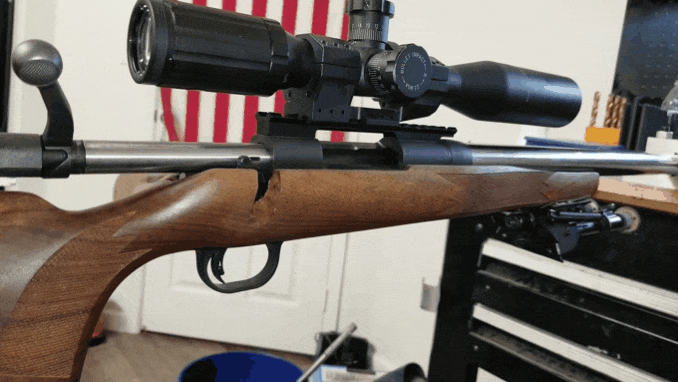
Here's a free tool that you can make to measure accurately your CBTO (Case Base to Ogive - Left Cartridge) and your max Chamber Length (To know your trim length - Right Cartridge).
Why the Hornady Case Overall Length Gauge Sucks . . .
Hornady does make some great tools, one which I recommend are there case body and bullet comparators. Yes, they also do make a case overall length gauge that utilizes a modified case. Essentially its a Cartridge that has been opened and threaded at the bottom and is sized to SAAMI specs to allow a rod to push a bullet while the tool is in the chamber. However I see this tool as useless and misleading. Let me explain.
Each chamber in every rifle varies in measurement. Using the Modified case from Hornady and their tool leaves variance and will inaccurately give you a max case overall length as the modified case is not fitted to your chamber. As the modified case is sized to SAAMI, the excess headspace will not be accounted for in the measurement given. There are a few companies that offer threading for your fire formed case. This can up the cost to $100 total.
Correctly measuring Case Overall Length
Bullet tips vary in length also, so using your calipers to measure from the case head to bullet tip WILL NOT give you a repeatable and accurate measurement. The use of Hornady's bullet comparator and correct caliber insert will be best to determine your correct bullet seating depth. As seen in the background of the picture above, using this tool will give you a CBTO. However as the name comparator implies, "compare". It is suggested to not go off other folks CBTO measurements due to manufactured bullet insert and chamber variances. If you lost the insert you originally used, its also suggested to re-measure.
Making your own Case Overall Length tool for an accurate CBTO
The tool is simple and requires only a fired formed case that has not been sized. Remove the spent primer and neck size only. I use a Lee Collet die, my preferred die for setting neck tension. A slit is then cut down the sides using a dremel and then is chamfer and deburred to allow a bullet to slide back and forth

The bullet is then placed barley into the case and chambered into a clean chamber of the rifle. Sometimes the rifling can grab the bullet and pull it out. Coloring the bullet with a sharpie will show a mark where the bullet stop. Perform this at least 5 times to check for consistency any variance can be averaged out. You should see only about a 1 thousandths variance if that. As a suggestion, removal of the bolt ejector plunger will make this process easier


Make your own Max Chamber Length Gauge
Surprisingly, what is listed in many reloading manuals as recommended trim length for your cartridge is actually excessive to majority of chambers. As I mentioned above, every rifle's chamber is different and factory chambered rifles are cut to accommodate reliability to the vast selection of available ammunition. Meaning they are chambered to have slop. Making this simple chamber length tool can help determine your max case length and utilize every bit of case capacity for those higher velocity nodes.
This tool is simple to make and requires a sacrificial fired case that is neck sized, and trimmed square. The case neck ring is then cut off near the middle, chamfered then slotted in the middle to allow the ring to freely slide back and forth over a bullet that has been seated into the rest of the case. Just like the DIY Cartridge Over All Length gauge above, this Max Chamber Length gauge is then inserted into a clean chamber with the ring slid away from the cartridge shoulder. Removing the cartridge carefully and measuring from the case head to top of the ring will give you your max chamber length.
I suggest trimming the brass 3 to 5 thousandths back from this measurement.
As you can see from the picture below, this 308 Winchester can have nearly 30 thousandths more than suggested trim length of 2.005" (Hornady 10th Edition)

Night Owl Enterprise (NOE Bullet Molds) also makes a insert that can get you this measurement also. Very inexpensive and can be found here. Chamber length button.
I hope this helps. I can not take any credit for these intuitive inventions. The diy cartridge overall length gauge was taught and passed down to me by a very knowledgeable shooter, James Pollard. And for the DIY Chamber Length Gauge, I learned that from an article in Accurateshooter. If you have any questions, feel free to comment below or send me a message. Thank-You for being part of this awesome community. Share the knowledge, share the fun
-Kenny
